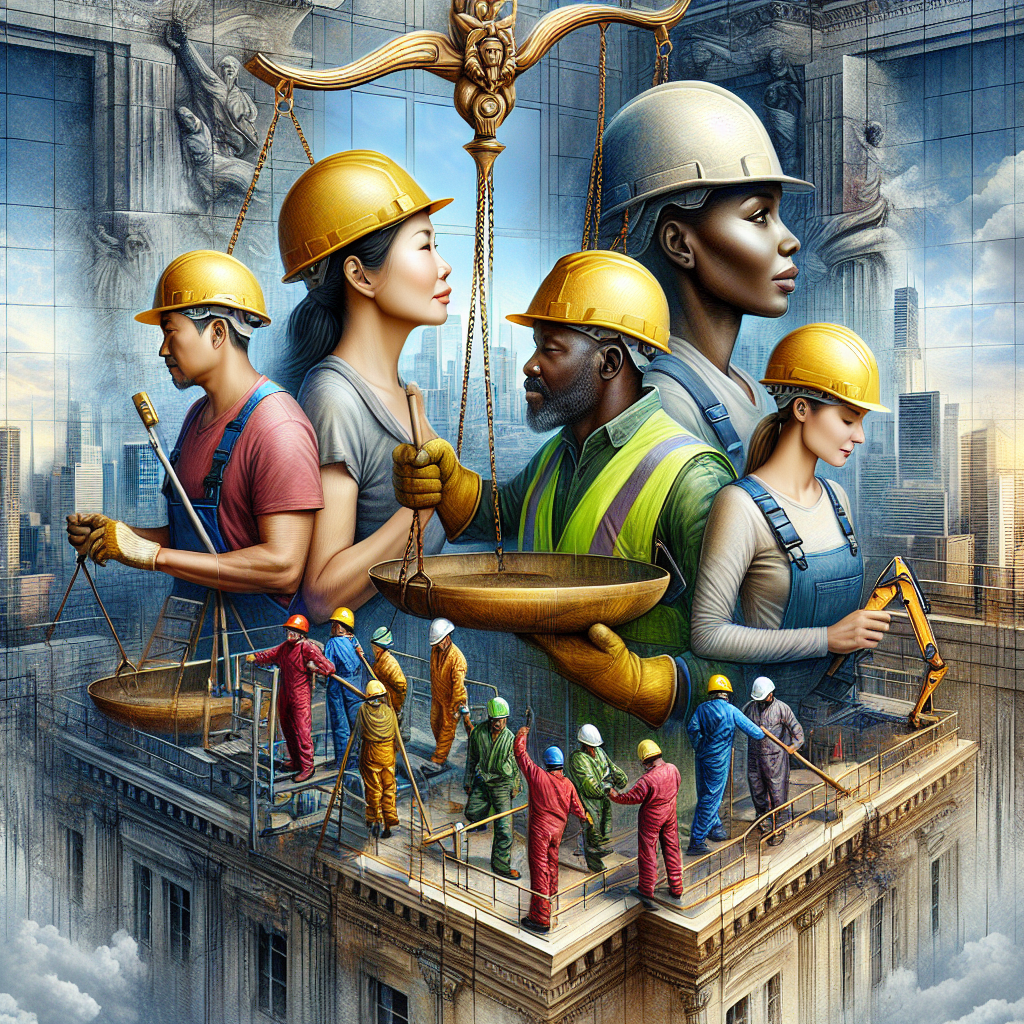Understanding Construction Site Injuries
In the field of construction, the potential for injuries is notably high. It’s important to fully understand the nature and causes of these incidents as they are central to prevention efforts and can significantly affect the legal protection offered to workers.
Common Causes of Construction Site Injuries
Most construction site injuries are due to either safety oversights or accidents that occur despite the best intentions. Typical causes include slips, trips, falls from height, objects falling on workers, machine entanglement, and overexertion. These circumstances can lead to a variety of injuries from minor cuts and scrapes to severe trauma such as fractures, burns, or even fatalities.
The Impact of Construction Site Injuries
The impact of construction site injuries goes beyond the immediate physical harm. Significant injuries often result in loss of income due to time off work for recovery. There is also the emotional toll that such a traumatic incident can inflict on the injured party and their loved ones. The financial strain may be increased by medical costs associated with treating the injury. Rehabilitation and physiotherapy costs can further inflate these expenses.
Legal Protection and Construction Site Injuries
Understanding the types, causes, and effects of construction site injuries is vital in identifying circumstances where legal protection is needed. Workers who are injured due to employer negligence, unsafe working conditions, or lack of safety training may be entitled to compensation. Laws vary by region, but generally, employers have a legal obligation to provide a safe work environment. If this duty is not met, and a worker gets injured as a result, there may be grounds for a lawsuit. Knowing the prevailing law and rights can help injured workers seek justice and compensation for their suffering and losses.
Types of Construction Site Injuries
Construction sites often involve heavy machinery, hazardous materials, and high-risk activities, which can lead to a variety of injuries. These types of injuries are quite common and can be severe or even fatal in some cases.
Falls from Height
Falls from height represent a significant number of construction site injuries. Workers might fall from scaffolding, ladders, roofs, or other elevated areas. These falls can result in serious injuries like fractures, head trauma, spinal cord injuries, or even death. Although regulations mandate the use of proper fall protection equipment, negligence or non-compliance can lead to accidents.
Struck-by Object Injuries
Struck-by object injuries occur when a worker is hit by equipment or material, often leading to serious physical harm. These incidents can happen when tools or materials are dropped from above, heavy machinery malfunctions, or due to improper handling of equipment. Struck-by object injuries may cause a range of problems, from minor cuts and bruises to major injuries such as concussions, broken bones or internal organ damage.
Caught-in/between Injuries
Caught-in/between injuries occur when workers are caught, crushed, or squashed between equipment, structures, or materials. This includes getting stuck in machinery, crushed between shifting or falling structures, or trapped in a trench collapse. The consequences of such incidents can be severe, including amputations, crush injuries, suffocation or even fatality.
Electrocution
Construction sites often have a significant amount of electrical equipment, including power tools and wiring. Electrocution injuries can occur from direct contact with live wires, malfunctioning equipment, or incorrectly installed components. Such injuries can result in burns, nerve damage, cardiac arrest, and in worst cases, death.
Each type of injury comes with an array of physical, financial and emotional complications. Understanding these injuries can help workers and their families make informed decisions about suitable legal protection.
Legal Rights of Injured Construction Workers
Understanding Workers’ Compensation
Workers’ Compensation is a policy mandated by the government to provide compensation to employees who get injured on the job, including construction workers. This coverage includes payment for medical expenses, lost wages due to disability, and benefits to dependents of workers killed during employment. It’s important to note that workers are eligible for these benefits regardless of who was at fault for the accident.
The Role of Personal Injury Law
In addition to Workers’ Compensation, injured construction workers also have the right to file a personal injury lawsuit against any third party involved in the incident. For example, if defective equipment caused the injury, the worker might have a case against the manufacturer of the equipment. Similarly, if negligence from someone other than the worker’s employer contributed to the injury, the worker can seek damages from that party.
Protections Under Occupational Safety and Health Act (OSHA)
OSHA lays out specific safety regulations that employers must adhere to in order to ensure a safe working environment. Injured construction workers have the right to file a complaint with OSHA if they believe that their injury occurred as a result of an OSHA violation. If found guilty, the employer may face fines and penalties, and this may strengthen the employee’s personal injury lawsuit. It’s essential for construction workers to be aware of these rights in order to protect themselves fully in the event of workplace accidents.
Role of Occupational Safety and Health Administration (OSHA)
Understanding OSHA’s Function
The Occupational Safety and Health Administration (OSHA) plays a pivotal role in ensuring the welfare of workers by enforcing standards for safe and healthful working conditions. This federal agency is tasked with establishing safety protocols and mandating their adherence across multiple industries, including construction.
OSHA ensures that employers are accountable for adhering to safety regulations. This responsibility involves tracking and investigating workplace accidents and injuries, inspecting work sites for potential hazards, and imposing penalties to those who fail to comply with safety rules and regulations.
OSHA Standards and Regulations in Construction
For the construction industry specifically, OSHA has designed regulations to minimize risks associated with physical activities, hazardous materials, and machinery operations. These rules encompass a wide range of topics, from scaffolding requirements and fall protection to handling hazardous substances and personal protective equipment (PPE) usage.
Compliance with these regulations is mandatory and crucial in maintaining a safe working environment. Non-compliance can lead to citations, penalties, or even job site closures. These repercussions underscore the importance of understanding and following OSHA regulations in the construction industry.
Enforcement and Inspection Process
One of the main ways OSHA enforces its regulations is through its inspection process. OSHA compliance officers conduct surprise inspections at worksites across the country to enforce their safety and health regulations. The primary purpose of these inspections is to identify and correct regulatory breaches that could potentially lead to worker injuries or fatalities.
During these inspections, OSHA officers can question workers, review records, and examine workplace conditions. In case of serious violations, OSHA may issue fines or demand immediate corrective action. Workers also have the right to file a complaint with OSHA if they believe their employer is not complying with OSHA standards or that there are serious hazards.
Retaining a Construction Injury Attorney
Why Engage a Construction Injury Lawyer?
A construction injury attorney specializes in representing individuals who have sustained injuries on construction sites. These legal professionals have profound understanding of both federal and local regulations governing construction sites, making them best placed to represent injured parties. If you or someone you know suffers an injury while at a construction site, it’s critical to consider engaging these experts.
The legal landscape associated with construction site accidents can be complex. In such scenarios, the expertise of a construction injury attorney becomes of paramount importance. They will not only provide legal counsel but also help gather evidence, engage expert witnesses if needed, negotiate settlements, and even represent you in court if the case goes to trial.
What to Look for in a Construction Injury Attorney
When looking to hire a construction injury attorney, there are several important factors to consider. Firstly, check the attorney’s track record. An attorney with a strong history of successfully handling cases similar to yours is a good sign.
Next, consider their level of expertise and experience in the field. Make sure they are familiar with construction laws and have handled construction-related cases before. It would be beneficial if they have a network of expert witnesses to testify on matters related to construction safety.
Another aspect to consider is the attorney’s approach to clients – they should be accessible, responsive, and empathetic. Ensure they have excellent communication skills as they will need to explain complex legal issues to you in a way you can understand.
From Consultation to Representation: The Role of a Construction Injury Attorney
Once you’ve found a potential candidate, the first step is typically a consultation. This is where you describe the circumstances of your injury, and the attorney assesses the viability of your case. Always bring all the related documents and evidence during this meeting.
If they take your case, the attorney will then handle all aspects of your claim. This includes investigating the incident, communicating with the other party’s insurance company, and obtaining any necessary medical records and reports.
In case a fair settlement cannot be reached outside the court, your attorney can file a lawsuit on your behalf and represent you during the trial proceedings.
Retaining a construction injury attorney could make a big difference to the outcome of your case, not least by ensuring that your rights are protected throughout the process.



